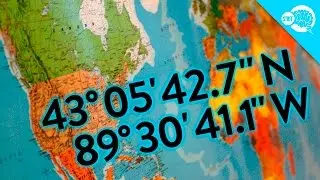How Are Tsunamis Formed?
What’s the difference between a tsunami and a normal wave? What makes them so deadly?
Learn more at HowStuffWorks.com:
http://science.howstuffworks.com/natu...
Share on Facebook: http://goo.gl/k3qrO6
Share on Twitter: http://goo.gl/RxK3Mz
Subscribe: http://goo.gl/ZYI7Gt
Visit our site: http://www.brainstuffshow.com
The word tsunami comes from two Japanese words: tsu (harbor) and nami (waves). Basically, it means when these waves hit the harbor, brother, you’d better look out!
Tsunamis are basically giant waves but there are some differences between them and normal waves. Any wave – whether a tsunami or a regular joe-schmo wave – is simply an energy carrier. A wave isn’t the movement of water, but rather the movement of energy through water. What initiates this energy transfer and the amount of energy they pack are two things that differentiate tsunamis from normal waves.
The typical wave on the surface of the ocean is propagated by blowing wind. (Well, Buckminster Fuller pointed out the wind sucks, it doesn’t blow, but that’s perhaps for a different episode.) When the wind whips up the surface it gets more and more traction, which builds a wave that travels inward toward the shore.
Tsunamis on the other hand propagate from underwater disturbances like a rockslide, earthquake or volcano. These are called tsunamigenic events.
Think of a massive pile of rocks or a faultline along two tectonic plates as possessing potential energy. There’s a ton of energy stored in them. But when that pile of rocks collapses or one plate along the fault line slips beneath another, that potential energy is unleashed. It becomes kinetic energy and when we’re talking earthquakes and rock slides the amount of kinetic energy released can be massive.
This energy is transferred outward from the point of origin in much the same way that a pebble tossed into a pond will create a series of ripples. This kinetic energy takes the form of waves radiating away from the underwater rockslide, volcano or earthquake and the waves carry this enormous amount of energy through the water at hundreds of miles an hour.
If you’re watching it overhead in the deep ocean, a tsunami wave will be only about 3 or so feet tall. But what you see, at the risk of mixing metaphors, is only the tip of the iceberg.
As the tsunami encounters shallower water, the upward sloping land compresses the energy of the wave, both slowing its velocity and increasing its height above sea level tremendously.
Contrary to common misconception, a tsunami is actually a series of waves (remember, like the ripples from the stone thrown into a pond). As they reach the shore and slow down, waves in the rear catch up and the whole wave train compresses, kind of like squeezing an accordion.
A person on the shore would see the tide pulled out and then suddenly reintroduced as a massive series of tsunami waves up to 100 feet high and traveling 30 miles per hour inland. The explosion of energy released by the rock slide or earthquake hundreds or thousands of miles away has reached the shore, bringing widespread destruction, death and flooding.
Since they pose such a danger, scientists are trying to find ways to alleviate tsunamis. The problem is, once tsunamis have started, they can’t be stopped. The best researchers can hope to do is predict their path, power and formation in order to warn coastal areas to clear out as soon as possible and save lives.
SOURCES:
http://science.howstuffworks.com/natu...
http://science.howstuffworks.com/natu...
http://www.nasa.gov/home/hqnews/2010/...
Watch video How Are Tsunamis Formed? online, duration hours minute second in high quality that is uploaded to the channel BrainStuff - HowStuffWorks 20 January 2015. Share the link to the video on social media so that your subscribers and friends will also watch this video. This video clip has been viewed 365,925 times and liked it 2.3 thousand visitors.































